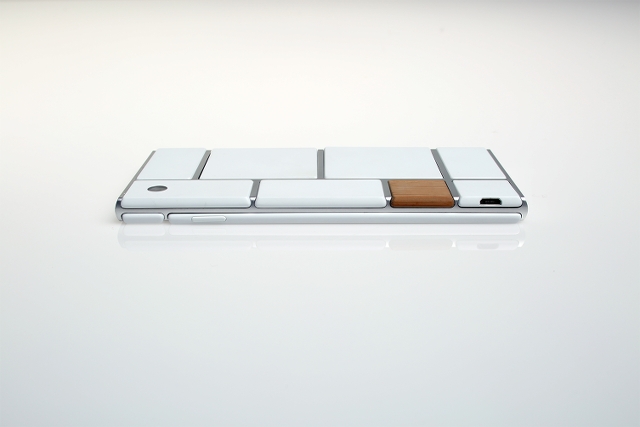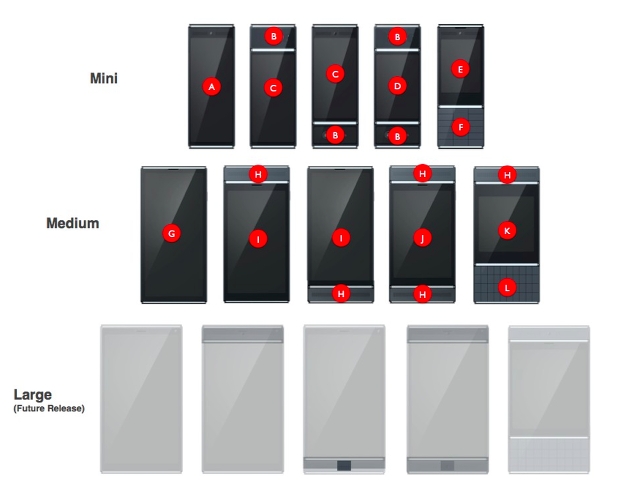
Welcome to Tête-à-tête, a new series where two of our writers remark on interesting topics in the mobile landscape — through chat. This week, Douglas and Daniel talk about Google and how they’ve become so embedded within the mobile space and how something like Project Tango could significantly shift the industry.
Douglas Soltys: This has been a conversation I have been wanting to have for awhile, but have been saving until after the Ara Developer Conference. The time has finally come to talk about Google and the two long-shot projects it kept in the sale of Motorola: Project Ara and Project Tango.
Despite the fact that Project Tango will soon be powering robots on the International Space Station, I feel that Project Ara’s modular smartphone initiative is a much more exciting proposition, just because of the global, industry-wide disruption that will occur if it bears fruit. But I want to check-in with you first to see if you concur, or if you’re more of a Tango guy at heart. Which is your ATAP project of choice?
Daniel Bader: I like moonshots: they are exciting, and take us away from the projected boredom of yet another year of Samsung and Apple dominance that is the smartphone industry. Both Ara and Tango are such projects, but only the former, I believe, had the power to change the industry in any substantive way. Tango, which appends a number of cameras, including infrared, to the back of an Android smartphone to enable 3D mapping of space in real-time, will inevitably be a niche category, relegated to specific industries outside the vast realm of consumer devices.
Ara, on the other hands — and if you’re looking for a refresher on the modular undertaking, head over here — is interesting. I, like many others, have a difficult time understanding how buying individual components of a smartphone can result in lower costs over time. But the prospect of upgrading only the parts that are out of date or running poorly is quite attractive, and I venture to say that it will appeal to a small but hardcore fan of people that, as with the PC hardware industry, are always looking for an edge.
Ara also seems to be quite far along in terms of its design philosophy. There are three module sizes — 1×1, 1×2 and 2×2 — that can combine to create a device with a small number of powerful hardware components, or a multitude of small, feature-rich equivalents. For example, if users want to eschew a rear camera sensor for a larger battery, or vice versa, that’s all possible. I can already see myself spending too much money on individual modules! Whether that functionality will translate into real-world adoption, though, remains to be seen. What do you think?

Douglas Soltys: I think many things, my dear Daniel. My first thought that the current tech model of planned obsolescence is ripe for change, especially as mobile devices have completed the slow transition from game-changers to commodities. There’s now really no significant benefit to buying a new phone every year, and the economical and ecological impacts of doing so are significant. Breaking down mobile hardware from a fixed set of manufacturers into an ecosystem of independent module developers (much like what happened with mobile applications in the mid 2000s) is not only the quickest and cheapest way to get 5 billion more people connected, its also the one with the biggest social return. I mean, we’re talking about Malaria-testing Tricorders here. Samsung ads aside, this really is the Next Big Thing.
I also think it’s notable that all of Google’s ‘moonshots’ are aimed at redefining what mobile currently means, in ways that I think Apple and Samsung aren’t even contemplating, let alone attempting. Apple butters its bread on a tightly controlled ecosystem defined by high-end, rigidly controlled hardware. Google is trying to make hardware development as ubiquitous as mobile software development; it doesn’t care who makes the hardware as long as it can trap the data from its use. Which makes me wonder: what kind of hardware could Apple offer that would compete with a truly bespoke mobile competitor. Can hardware be that compelling, or is it all about the (connected) services the hardware enables?
Daniel Bader: I agree that there are exciting facets of Ara but with Android Google has already made hardware development as ubiquitous as software development. I believe in customization, but I don’t want my phone, a tightly-controlled (and tightly-spaced) set of design decisions left up to my discretion. Just this week, OnePlus announced a device with nearly identical specs to the Samsung Galaxy S5 for one third of the cost ($299 compared to $699). Users looking for a device for under $200 are already well served by Motorola and Nokia, with Chinese manufacturers like Huawei, ZTE, Oppo, Xiaomi and others bringing down the average sales price of a high-end Android device overall.
The incredible pace of change in the smartphone industry has inevitably slowed, with mid-range devices lasting longer than their previous-generation equivalents as hardware quickly outpaces the needs of its accompanying app ecosystem. I’m all for democratization of hardware manufacturers, but you have to remember that Apple and Samsung both source their chips from other companies, including Qualcomm, Broadcom, Texas Instruments, Intel, MediaTek and many others. Call me a cynic (though I’d prefer to think of myself as a pragmatist) but I don’t think Ara is going to disrupt anything in the low-end. I see it being used more as a way to sell the razor for next to nothing and charge a lot for really sharp blades.
A long time ago, Apple realized that only a small percentage of people want to tweak the crap out of their smartphones. Even Google is trying to prevent Android users from messing too much with their devices, and as an Android fan I often wished it was more tightly controlled and less prone to security breaches. I don’t need a removable battery or a microSD slot, and I certainly don’t need a million ways to array my icons. I just need a great screen, a long-lasting battery, a serviceable camera and an assortment of fantastic apps. iOS has offered that for some time (though the iPhone itself is too small for many, including me) and Android OEMs are beginning to catch on (HTC and Sony, especially).

Douglas Soltys: Your point about customization is well-taken. My aversion to Android is mostly an aversion to fiddling – I prefer technology that works to make things easy for me, rather than technology I have to work at to get how I want it. But I feel that with Project Ara’s modular hardware design, the customization we’re talking about is fundamentally different, and not in a “which graphics card is right for my PC?” way. You defined your smartphone hardware needs in terms of screen, battery, and camera, most of which are incredibly similar across devices due to the fact that, as you pointed out, the major manufacturers all source the same components.
But with Project Ara, a smartphone isn’t defined by these limited components. Manufacturers can now build modules that would have never previously been sourced into a mass market smartphone, because the increased cost would curtail niche interests. The Malaria-tester I mentioned above is one example, but how about a less altruistic one, like a Fitbit-style biometrics module? Or perhaps a high quality recording microphone? Much like how most people aren’t interesting in hemming their own clothes, but choose a new outfit each day, I think this level of day-to-day smartphone customization will see broad appeal.
Perhaps my examples seem less than convincing, but my mind is floundering in the face of these untapped prospects. I think that’s what makes Google’s ‘moonshots’ so compelling: they have the potential to change the mobile landscape in ways we can’t predict, much less fully grasp. Whatever road Google ends up taking us down, however, I’m sure that it won’t be boring.
MobileSyrup may earn a commission from purchases made via our links, which helps fund the journalism we provide free on our website. These links do not influence our editorial content. Support us here.


